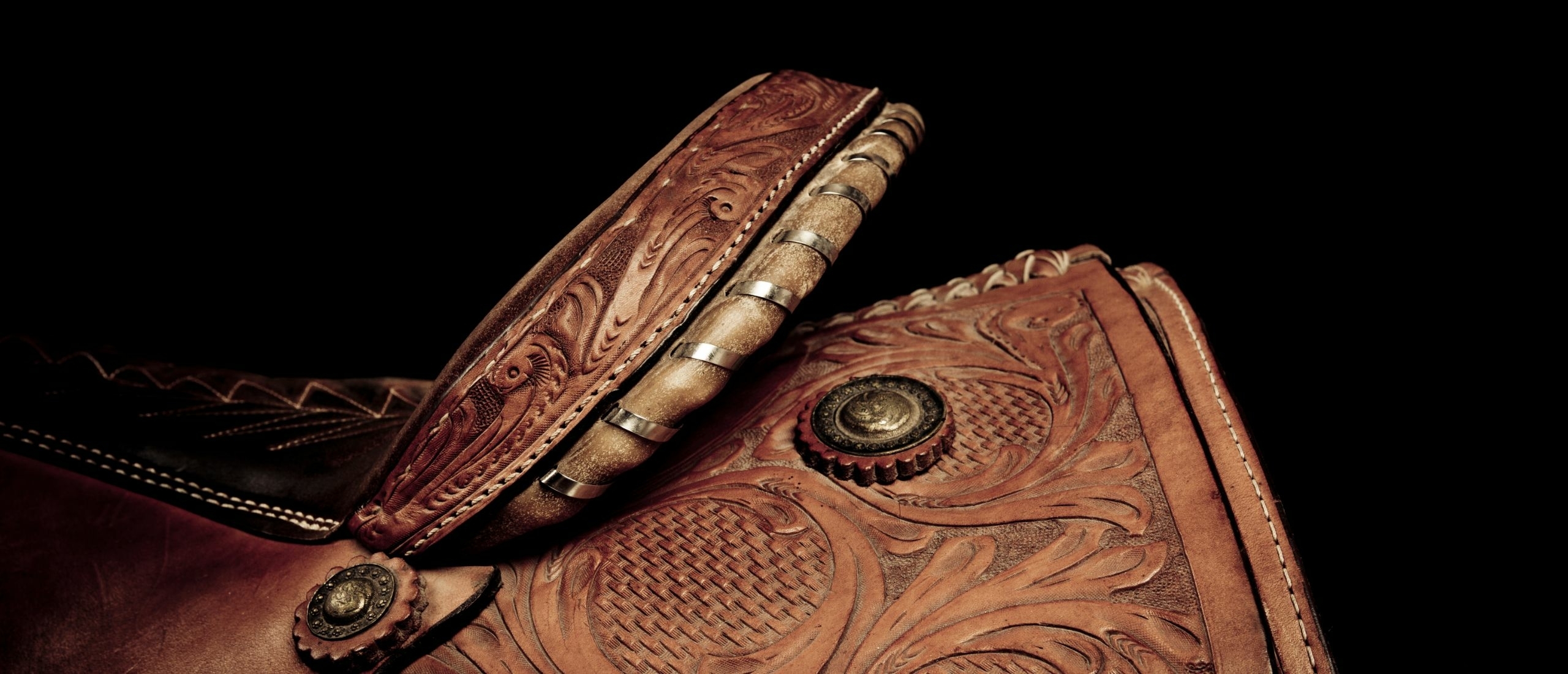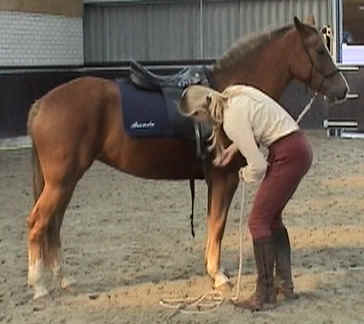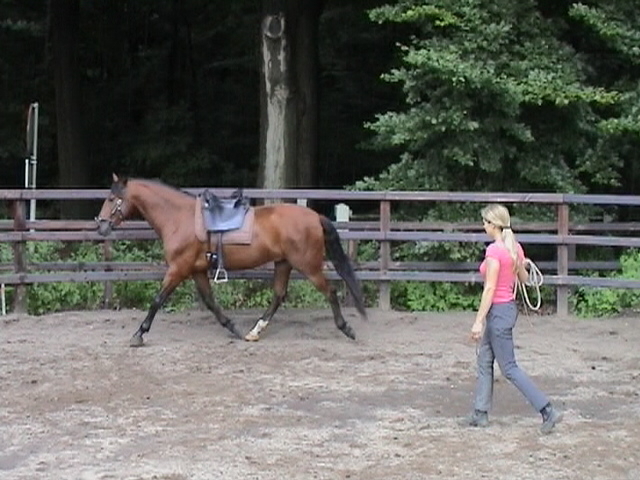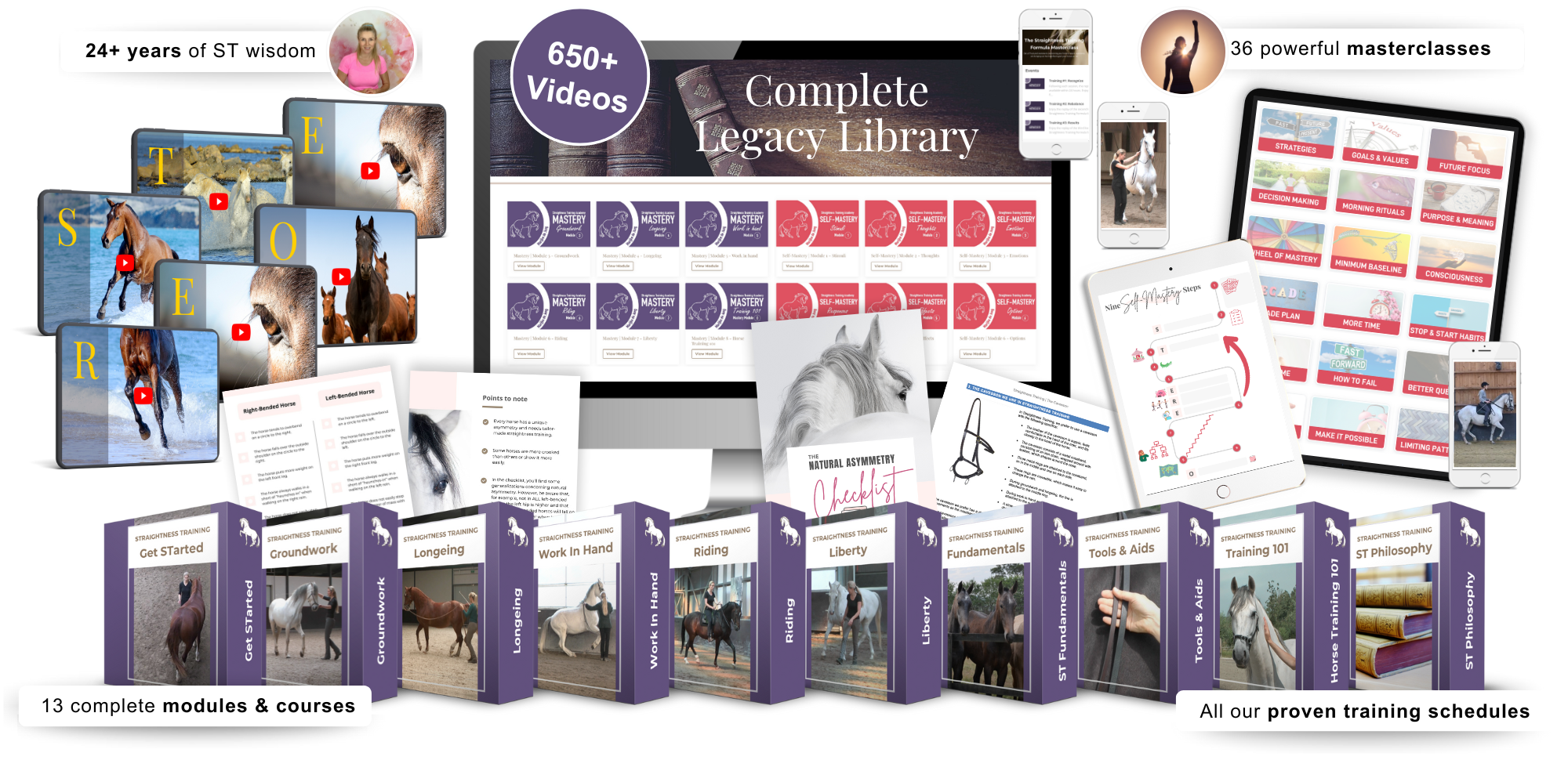
How To Get The Young Horse Used To The Saddle
Getting the horse used to the saddle can be done in a few steps.
It is wise to prepare the horse in a horse-friendly step-by-step approach to carry a saddle and a rider. In nature, predators jump on the horse from above, exactly where the saddle is placed on the back and where the rider will sit. Following the next steps, you can make sure that your horse is accustomed to the saddle and rider in a calm way, and prevent panic and flight reactions.
1. Bodywork
Then you will touch the horse over his entire body to enhance his body awareness. Touch with your hands the back and belly of the horse simultaneously. This will prevent the horse from over reacting when you touch him later on with saddle and girth.

2. Girth preparation
With a scarf you can then give a little pressure on the place where the saddle and girth will be placed later on. If the horse becomes uneasy and starts to walk: keep the pressure, breath out and calm him with a low and gentle voice, until the horse is calm again. Then you can release the pressure. Repeat this a couple times. This will teach the horse to stand still when he feels pressure instead of walking away from it. Also, let the girth dangle against its legs gently, so that the horse will not be spooked if this ever happens accidentally.

3. Saddle blanket
Let the horse sniff the saddle blanket and then approach the horse from both sides carrying the blanket. Then, let it slide from its neck onto its back.

4. Bareback pad
Then you can put a bare back pad on your horse’s back. Do not throw the girth over your horse’s back, but gently lower it on the right side. The moment your horse breathes out, you can tighten the girth one hole at a time. Then, work your horse in freedom again, so he can become accustomed to the pad, and let his tension out through moving.

5. Saddle
Then you can place the saddle on without stirrups. Thanks to the calm preparations, your horse will accept saddle and girth without problems.

6. Stirrups
Finally, you can hang the stirrups to the saddle and start working in freedom again. When the horse starts to trot, the stirrups will move and touch its body. The horse is then likely to show an instinctive response, but the fight- or flight behavior is likely to disappear quickly the moment the horse discovers the stirrups do not harm him.

When the horse is accustomed to the saddle, it is time to prepare the horse to the carrying of a rider.
Links to Related & Recommended Articles

